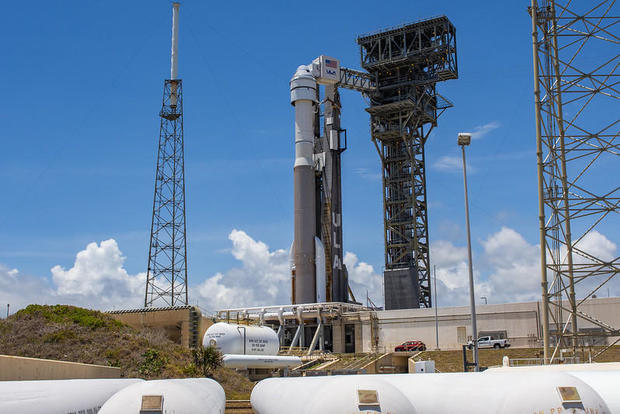
NASA orders yet another delay for Boeing’s hard-luck Starliner
Plans to launch Boeing’s oft-delayed Starliner spacecraft on its first crewed test flight Saturday were put on hold Tuesday night to give managers more time to evaluate a small helium leak in the ship’s propulsion system. A new launch target was not announced.
The Starliner’s crew — commander Barry “Butch” Wilmore and co-pilot Sunita Williams — remained at the Johnson Space Center in Houston awaiting word on when to head for the Kennedy Space Center to make final preparations for launch to the International Space Station.
United Launch Alliance
They had hoped to blast off at 3:09 p.m. EDT Saturday, assuming NASA and Boeing managers agreed it would be safe to launch the spacecraft “as is,” with a small, but persistent leak in the ship’s propulsion pressurization system.
countdown was called off after engineers with Atlas-builder United Launch Alliance noted unusual behavior in an oxygen pressure relief valve in the rocket’s Centaur upper stage.
Managers eventually decided to haul the rocket back to the company’s Vertical Integration Facility to replace the valve. That work was completed without incident and the new valve was cleared for flight.
Boeing engineers took advantage of the delay to carry out a more thorough assessment of the helium leak, which was traced to a specific reaction control system thruster in one of four “doghouse” assemblies mounted around the exterior of the Starliner’s drum-shaped service module.
Each doghouse features four orbital maneuvering and attitude control (OMAC) thrusters and four smaller reaction control system maneuvering jets. Pressurized helium gas is used to push propellants to the rocket motors in each doghouse as well as to four powerful launch abort engines that would only be fired in the event of a catastrophic booster failure.
Engineers tightened bolts around the flange where the leak was detected, pressurized the lines and then ran tests to determine if the leak was still present. In the meantime, launch was re-targeted for May 21 and then, when tests revealed the leak was still present, to Saturday to give engineers more time to assess the data.
The flight is now on hold indefinitely, pending results of the ongoing analysis.
More
More
Source: cbsnews.com